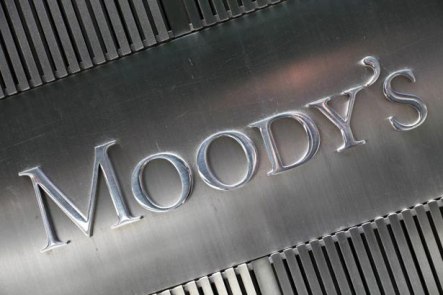Moody’s predicts low profits for Ghanaian banks
 Ghana’s 36 commercial banks may have to do a bit more this year if they must return to efficiency and profitability following declined revenue in 2016 and 2017, the ratings agency, Moody’s has said in a report copied to ghanabusinessnews.com.
Ghana’s 36 commercial banks may have to do a bit more this year if they must return to efficiency and profitability following declined revenue in 2016 and 2017, the ratings agency, Moody’s has said in a report copied to ghanabusinessnews.com.
The research arm of the agency, Moody’s Investors Service in its latest report on Monday pointed out, “continued slowdown in the growth of bank loans and advances in 2017”. This means, fewer people; either individuals or companies took loans from the banks, perhaps, due to High Interest Rates (HIR).
“We expect the muted loan growth to reduce Ghanaian banks’ revenue, straining their efficiency ratios and profitability.” says Akintunde Majekodunmi, vice president and banking analyst at Moody’s’.
The report corroborated Ghana’s own central bank’s assertion contained in the summary of economic and financial data released just last Friday, that, loans and advances grew by just 5.9 per cent in 2017, compared with 18.3 per cent in 2016 and 24.9 per cent in 2015.
Citing the Bank of Ghana, the report noted that, supported by robust economic growth, Ghanaian banks expanded their loan books significantly in the years 2014 and 2015. For instance, system loans grew almost twofold to GH¢30 billion in 2015 from GH¢17 billion at year-end 2013. However, Ghana’s operating environment deteriorated considerably in 2016 as real GDP growth slowed to 3.5 per cent from an average of 7.7 per cent during 2010-15. Yearly loan growth also dropped sharply in 2017 to 5.9 per cent, a contraction in real terms, it added.
In July last year, the Bank of Ghana brought down rates for 91 day Treasury Bill (T-Bills) to 12.5 per cent while that of 182 days was 12.9 per cent, gingering expectations that it would translate into lower interest rates on loans but that was not to be. The banks argued the T-Bills only account for a slight percentage of the indicators used in calculating the rates and this has consequently slowed down loan growth, the report indicated.
According to Moody’s, the slowdown in loan growth will reduce interest income from loans and loan-related fee income, commission income and bank operating revenue. Already, interest income from loans and advances declined to 44.9 per cent of total revenue as of October 2017 from 50.4 per cent in October 2016, although it remains the largest contributor to revenue. This reduction in loan growth is occurring amid declining interest rates, the report said.
In 2016, then President John Mahama disclosed that even government failed to borrow from the Bank of Ghana, contrary to speculations. “Under the extended credit facility of the International Monetary Fund (IMF), this year we started a zero central bank financing. So, every expenditure by government is not borrowed from the central bank,” he told Journalists.
The following year, in 2017, the country’s 360-day treasury bill rate declined by 650 basis points, the 182-day treasury bill rate by 472 basis points, and the average lending rate dropped by 238 basis points, pushing down the industry interest spread to a still-high 9.5 per cent in October 2017 from 12.7 per cent in 2016, the report noted.
It stated further that, consequently, banks’ costs, which partly reflect a high inflation rate of 11.8% as of December 2017, are at risk of growing faster than operating revenue in 2017 and 2018, negatively affecting their efficiency ratios. The banks’ cost-to operating income ratio already deteriorated to 54 per cent as of October 2017 from 49 per cent in October 2015 and the return on assets declined to 3.0 per cent from 5.3 per cent over the same period.
“We expect loan-loss provisioning to remain elevated because of Ghana’s high nonperforming loans (NPLs), further straining profitability. NPLs increased to 22.7 per cent of gross loans as of December 2017 from 17.3 per cent in December 2016 and 14.7 per cent in December 2015. Despite the restructuring of some problem loans relating to state-owned enterprises in 2017, banks continued to face high asset risks, reflecting Ghana’s economic slowdown in 2016.
High concentration risks will continue to compound banks’ asset risks: the commerce and finance, services, and electricity, water and gas sectors contributed 61 per cent of total NPLs as of October 2017. However, the slowdown in loan growth likely will subdue the formation of new NPLs in 2018 and 2019, owing to the muted flow of new, untested loans in the overall loan book in 2017,” says Moody’s.
By Emmanuel J.K Arthur
Copyright ©2018 by Creative Imaginations Publicity
All rights reserved. This report or any portion thereof may not be reproduced or used in any manner whatsoever without the express written permission of the publisher except for the use of brief quotations in reviews.
